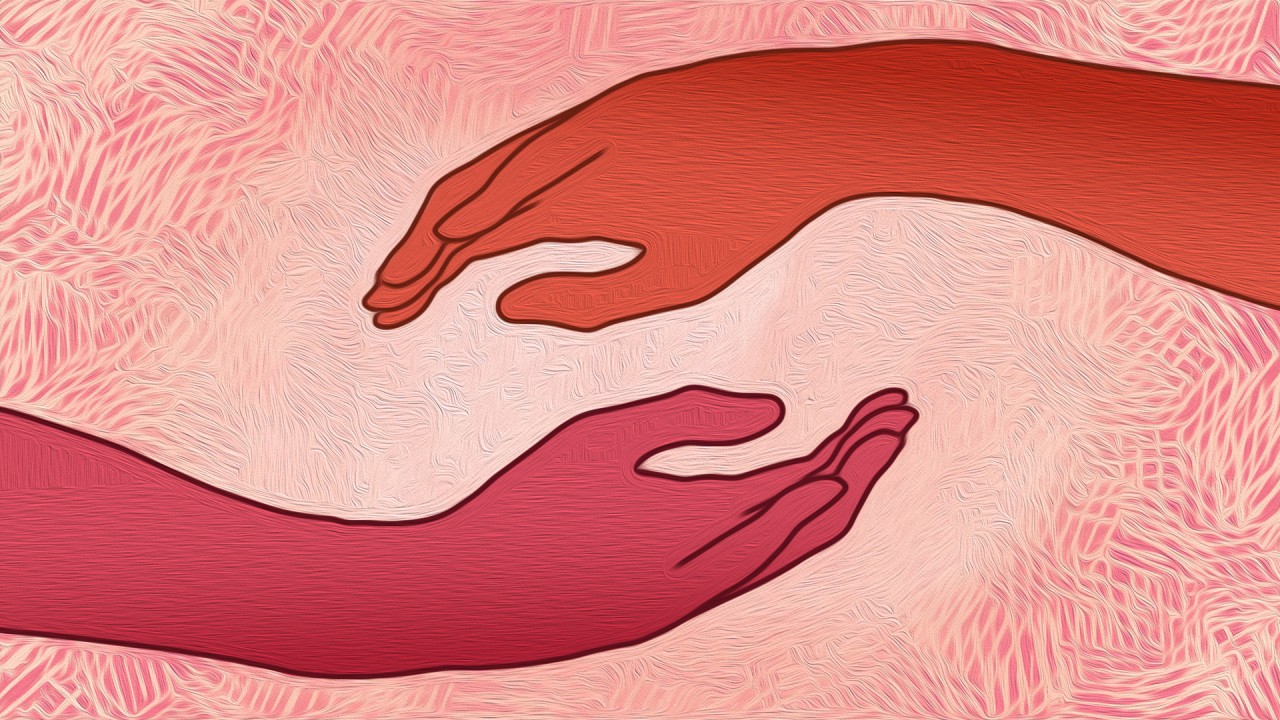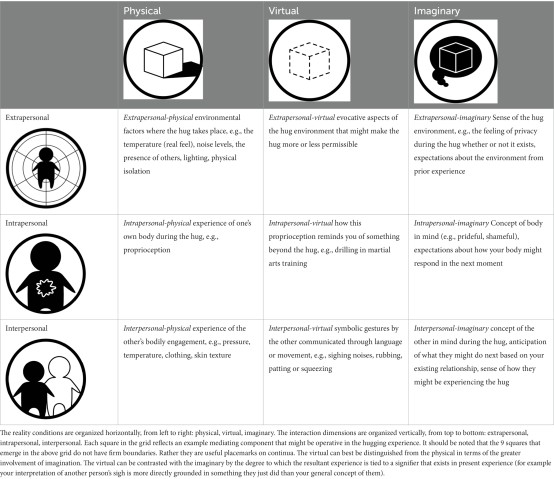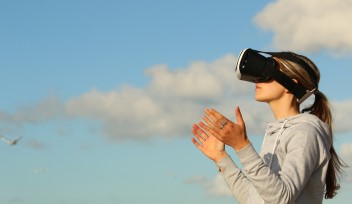Do digital hugs work?

At first glance, the term "digital hug" might seem paradoxical. After all, how does the physical act of embracing one another have anything to do with the digital world in which we are so often physically distant, even worlds apart?
But the ‘hugginess' we associate with hugging is maybe not reducible to its physical characteristics alone, suggests a new research paper titled "Do digital hugs work? Re-embodying our social lives online with digital tact." In the paper, published in Frontiers in Psychology, on August 9, 2023, the researchers from Okinawa Institute of Science and Technology (OIST) and University College Dublin explain that the experience and the resulting feelings of comfort and care, consolation and groundedness that characterize a hug arise from a complex interplay of a multitude of different components, most of which survive and can even be engineered in our digital spaces too.
Encouraged by the global upheaval caused by the COVID-19 pandemic, a group of international researchers that included Dr. James (i.e., Froese et al. 2021 & James et al. 2022) used the opportunity to conduct online surveys of adults (age 18+) in the UK, Japan, and Mexico about their experiences of coping with social restrictions imposed to curb the spread of the virus, restrictions which abruptly and severely limited our physical interactions and forced many of us to seek solace and comfort in the digital world. The present paper drew heavily on this data.
"In our data, we encountered many stories. Some people appeared to be coping well, celebrating technology and its capacity to facilitate healthy social relationships during a challenging time," said Mark James, first author of the paper and a postdoctoral scholar in OIST’s Embodied Cognitive Science Unit. "On the other hand, there was a group of people who was evidently upset about the situation. With this as the starting point of our research, we came to realize that it wasn't the technology alone that defined the interaction. What you did before, during, and even after the interaction—such as how you reflected upon the interaction itself—became relevant in shaping your online social experience."
To understand what might help account for this variety in experience, and given its frequent mention in their data and much of the media in the early stages of the pandemic, the researchers used the physical hug as an example and examined its components. "Any given experience can be broken down into its elements. It is at the intersection of these mediating elements that a unique experience emerges," Mark James explained. They used a framework called the Mixed Reality Interaction Matrix (MRIM), a three-by-three grid that serves as a means of examining the experience of the hug (or any other experience) by breaking it down into its contributing physical, virtual and imaginary elements. "This doesn't imply that all the components contribute equally. In fact, having such a map allows you to start thinking about which components are more relevant and contribute more to the experience. It's an attempt to grasp the elements of a subjective experience," according to James.

When they used MRIM to explore the physical hug, James said, "What we realized was that every single component, except for one, the so-called interpersonal-physical, was translatable to the digital space. And not just translatable, but in some cases, even amplifiable. Meaning, that people who could kind of turn up the volume on other components of the interaction seem to be able to compensate somewhat for the absence of those that are not available, like physical touch."
Generally, it takes a long time to cultivate interpersonal skills for social interactions, and to do so in ways that are well-attuned to the environments in which they take place, like the ability to hold conversations and grasp social conventions that differ across settings. Similarly, James stated, "It's people using the right skills in the right way at the right time that characterizes good social interactions digitally too, which in turn can generate a sense of meaning, connection, and care in these spaces." He added, "Digital hugs are largely a matter of skill." It’s this set of skills that the authors have termed "digital tact." "By observing people who tend to excel at social interactions digitally we start to identify a set of skills, which we have labelled as digital tact. These are people attuned to the reality that even in the online space there will be existing norms and conventions, that there will be best practices, and crucially, there are other people sharing that space, people with bodies that feel emotions and have needs, some of which will be different from yours. It might be easier to understand this by considering the opposite scenario: you can immediately sense the absence of tact when, for instance, you are on the phone with someone who is washing dishes or engaged in another task. They have not taken into account your needs on the other end, that you probably don't want to be listening to the sounds of dishes while you're talking to them, etc." The notion of tact, which we understand and recognize in face-to-face interactions, and which connotes the tactile, is intended to remind us that it is in fact embodied persons, with all of their bodily needs, that continue to populate online spaces, even if we are sometimes only interacting with their avatars.
In today's world, an ever increasing portion of our social lives occur online. Amidst such a progressively digitalized existence, this research reminds us that so much of the meaning in our lives derives from embodied social interaction, but also gives us the tools to sustain and even improve our embodied social interactions even when we are worlds apart. Ultimately, this research can equip designers, educators, therapists and thinkers, and even society at large, with both a conceptual and practical toolkit to reimagine social spaces online and how we interact within them, so that we might better care for those we share them with. As for the next step, researchers plan to look at digital tact in a more experimental context.
Digital tact is unlikely to be able to address the social ills that so many of our digital platforms seem to be exacerbating, but it is certainly one step in that direction and we welcome it with open arms, maybe even a hug.
---
Written by Megha Kalra
Article Information
Specialties
Research Unit
For press enquiries:
Press Inquiry Form














